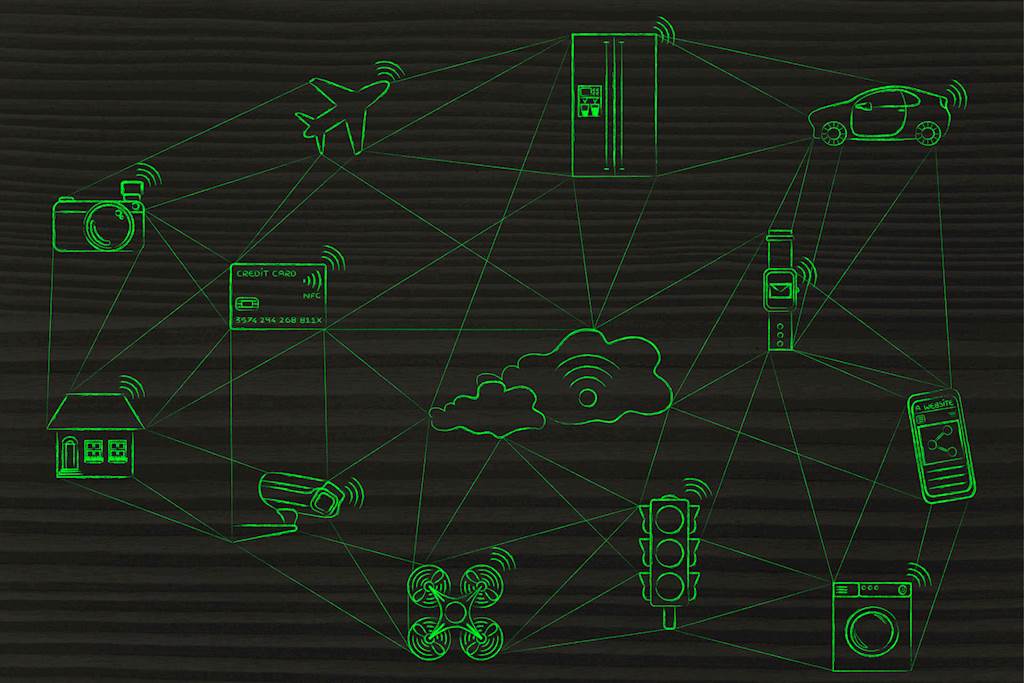As broadband internet becomes more accessible to everyone, the cost to use it is decreasing. More and more devices have built-in sensors and are Wi-Fi technology enabled, and so the general costs of technology are also lessening. This has all created a perfect ground for the "Internet of things" (IoT), a concept that's become increasingly popular in the last few years. But what exactly is the "Internet of things," and how can it impact business as we know it?
What is IoT (Internet of Things)?
At its core, IoT is simple. It's about connecting various devices on the internet and allowing them to talk to us, each other, or applications.
If a device has an on and off switch, it has a good chance of being a part of the IoT. This includes everything from cell phones, wearable devices, headphones, washing machines, lamps, coffeemakers, and almost anything else you can think of. IoT can also be applied to parts of machines—for example, a drill of an oil rig or the jet engine of an airplane.
In other words, IoT is a system of “things” that are communicating with each other using the internet.
Examples of IoT application across industries
Business Insider’s premium research service, BI Intelligence, predicts more than 24 billion IoT devices will be on the planet by the year 2020. That’s an average of four devices for every person. Last year, this number was 6.6 billion. The predicted rise in the number of IoT devices confirms the major potential of IoT in retail, health care, transportation, and many other industries.
In retail, we already have sensors that check out customers automatically, restock inventory, have a VR code that lets customers visualize how the product will look in their homes, and have detectors that read people’s first impression of a product by observing facial expressions.
The health care industry uses IoT to assist in disease diagnosis and treatment. Some examples include activity tracking during cancer treatment, connecting inhalers, ingestible sensors for medicine intake tracking, and connecting lenses.
Additionally, smart cities use IoT devices for things such as connected lights, meters, and sensors to collect and analyze data. Those cities then use that collected data to improve infrastructure, public utilities and services, and more.
How IoT impacts business
With IoT application growing across various industries in recent years, many organizations have started implementing it in hopes of improving their business. However, most of them are still in the pilot phase and are not ready to move ahead to create enterprise-level, transformative IoT strategies.
According to HCL Technologies’ 2017 global IoT survey, all of the 263 senior business and IT decision-makers surveyed either plan to or have already started to implement IoT and expect to see benefits after completing implementation. The survey was conducted across the United States, the UK, Denmark, Sweden, and Germany. Of those organizations surveyed, 82% think they are in a stronger marketplace position because of IoT, 50% believe they are already behind the curve, 43% have failed to implement IoT fully, and 91% face challenges when choosing the right IoT platform.
In the "IoT Business Index 2017,” the Economist Intelligence Unit’s report (sponsored by the ARM and IBM), the majority of 825 senior business leaders from around the globe had the opinion that following an IoT path is an important part of their long-term success.
IoT security concerns
While IoT brings endless possibilities, we shouldn’t forget about potential security issues. The main weakness of IoT is that it increases the number of devices behind a network firewall. Not all companies behind these devices are focused on improving security, which creates more vulnerability for hackers to exploit. According to Gartner’s 2016 Strategic Planning Assumptions (SPAs) for security, more than 50% of IoT device manufacturers will not be able to take care of threats caused by weak authentication practices. And by 2020, over 25 percent of identified enterprise attacks will involve IoT, but only 10 percent of IT security budgets will be dedicated to IoT.
This data gives an interesting perspective—not only should companies consider implementing IoT in their strategies, they should also consider how they will deal with potential threats caused by it and dedicate a larger budget for executing it.
Access the latest business knowledge in IT
Get Access




Comments
Join the conversation...